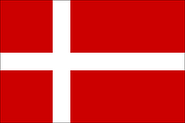 Greenland was home to several groups of people, including the Dorset and later the Inuit. Erik the Red, a Norwegian exile settled there around 984 C.E. Those settlements lasted about 450 years before disappearing (if you want to read more about the early Viking settlements on Greenland try reading Collapse which has around 5,000 pages on it). Denmark-Norway reasserted its claim to the island in 1721, and in 1814 Greenland was officially ceded to Demark from Norway as part of the Treaty of Kiel. In 1979, Greenland was granted self-rule.
Greenland was home to several groups of people, including the Dorset and later the Inuit. Erik the Red, a Norwegian exile settled there around 984 C.E. Those settlements lasted about 450 years before disappearing (if you want to read more about the early Viking settlements on Greenland try reading Collapse which has around 5,000 pages on it). Denmark-Norway reasserted its claim to the island in 1721, and in 1814 Greenland was officially ceded to Demark from Norway as part of the Treaty of Kiel. In 1979, Greenland was granted self-rule. Greenland is the world's second largest island behind only Australia, with a total area of 836,109 square miles - over 80% of which is covered by the Greenland ice sheet. The population of Greenland is 56,361 which are entirely located on small coastal towns. Although traditionally most income from Greenland came from mining, currently its most important industry is fishing, shrimp in particular. Inuits in Greenland have faced many of the same issues that indigenous populations have experienced in the Americas and Australia.
Greenland is the world's second largest island behind only Australia, with a total area of 836,109 square miles - over 80% of which is covered by the Greenland ice sheet. The population of Greenland is 56,361 which are entirely located on small coastal towns. Although traditionally most income from Greenland came from mining, currently its most important industry is fishing, shrimp in particular. Inuits in Greenland have faced many of the same issues that indigenous populations have experienced in the Americas and Australia.
The Faroe Islands are a small group of islands about 200 miles north of the Scottish mainland. The name comes from the Faroese world for "sheep islands." The islands started out as the home of Irish hermits who settled there in the sixth century, although they were later replace by Vikings settlers. Currently the Faroe Islands has a population of 50,000. The Norwegians maintained control of the islands until 1380 when control gradually fell into the hands of Denmark. The economy of the Faroe Islands is mostly based on fishing, as well as farming and wool. Every once and a while, the islanders attempt to secede from Denmark.

No comments:
Post a Comment